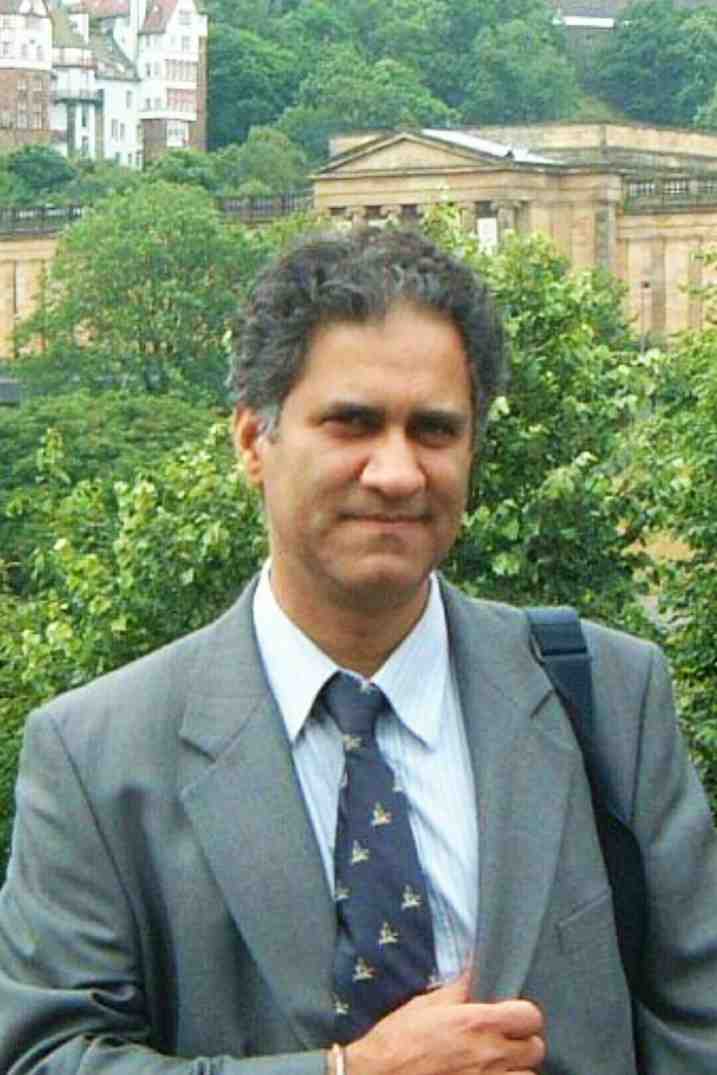AUCTORES
Globalize your Research
Research Article | DOI: https://doi.org/10.31579/2578-8965/266
1Health Systems and Service Consultant, Addis Ababa, Ethiopia.
2Head of Reproductive Health and Population Studies Department, Addis Continental Institute of Public Health, Addis Ababa, Ethiopia.
3Department of Biostatistics, College of Science, Debre Tabor University, Debre Tabor, Ethiopia.
*Corresponding Author: Mekonnen Muleta Debel, Health Systems and Service Consultant, Addis Ababa, Ethiopia.
Citation: Mekonnen M. Debel, Tigest Shifraw, Alebachew T. Belay, (2025), Knowledge of Emergency Contraceptives and Associated Factors among Female Students of Government High Schools, Addis Ababa, Ethiopia, J. Obstetrics Gynecology and Reproductive Sciences, 9(4) DOI:10.31579/2578-8965/266
Copyright: © 2025, Mekonnen Muleta Debel. This is an open-access article distributed under the terms of The Creative Commons Attribution License, which permits unrestricted use, distribution, and reproduction in any medium, provided the original author and source are credited.
Received: 05 May 2025 | Accepted: 15 May 2025 | Published: 21 May 2025
Keywords: knowledge; emergency contraceptives; females; adolescents; bole sub-city
Background: Emergency contraception (EC) is an effective contraceptive method or procedure used by adolescents to avert unwanted pregnancy following unprotected sexual intercourse, due to missing or non-use of regular contraceptives methods. Unwanted pregnancy and unsafe abortions are major public health problems in limited-resource countries especially for adolescents. However, there are documented knowledge gaps on EC among female high school students in Ethiopia.
Objectives: This study aimed to assess the knowledge of EC and associated factors among female students in government high schools in Bole Sub-city in Addis Ababa, Ethiopia.
Methods: A cross-sectional study was conducted with simple random sampling to select 634 female students in 2/6 governmental high schools using a multi-stage sampling technique resulting. Data were collected by using a self-administered questionnaire and entered in EpiData version 3.1 and analyzed using STATA 15. Descriptive statistics, bivariate and multivariable logistic regression analysis were used to assess associations.
Results: The magnitude of EC knowledge was 41.6% (95% CI: 37.77, 45.59) among female high school students. The level of knowledge towards EC is significantly associated with females ages 18 years and above [AOR = 3.88; 95 % CI (1.09, 13.85)], married [AOR = 3.64; 95 % CI (1.46, 9.04)], having boyfriend [AOR = 1.85; 95 % CI (1.15, 2.99)]; having discussion about reproductive health (RH) issues with their parents [AOR = 1.80; 95 % CI(1.24, 2.61)]; and having sexual intercourse history [AOR = 5.22, 95 % CI (1.42,19.24)].
Conclusion And Recommendation: The study documents an inadequate level of knowledge towards EC among female students in two government high schools in Ethiopia. There is a need to educate all female high school students about EC as it helps them prevent unintended pregnancies and empower them to make informed choices about their sexual and reproductive health rights.
Emergency contraception (EC), is an effective contraceptive method or procedure that can be used by adolescents to avert unintended (unwanted) pregnancy following unprotected sexual intercourse, skipping use of regular contraceptives methods or non-use of contraception to prevent unintended pregnancy or unplanned pregnancy [1]. There are two types of ECs namely, oral emergency contraceptive pills (ECPs) and intrauterine contraceptive devices (IUCDs) [2]. When used within 72 hours after sexual intercourse, EC pills are up to 85% effective to prevent pregnancy, while with the use of IUCDs unwanted pregnancy can be averted in 99% of the cases [3]. EC offers an unparalleled opportunity for preventing pregnancy after unprotected sex that no other contraceptive method can provide.
According to the United Nations Population Fund (UNFPA) report (2022), globally about 257 million women who want to avoid pregnancy are not using modern methods of contraception [4]. Nearly half of these pregnancies are unintended. Additionally, over 60% of these unintended [unwanted] pregnancies end as unsafe abortion that could be the cause of 5-13 % of all maternal mortality [5].
In Ethiopia, early initiation of sex poses a major challenge to the young generation. According to the 2016 Ethiopian Demographic Health Survey (EDHS) report, 24% and 62% of women initiated sex before the ages of 15 and 18 years, respectively. The EDHS 2016 report also indicated that only 4% women of reproductive age use emergency contraceptives [6].
Female students are among the young generation who become sexually mature while in high school. Female high school students are also one of most vulnerable groups of the population for unintended pregnancy in Ethiopia [7, 8]. For example, a study conducted on the prevalence and determinants of unintended pregnancy among female high school students in Arsi Zone, Ethiopia indicated that about 30% of them had experienced had an unwanted pregnancy [9]. These girls may be compelled to either dropout from school or chose an unsafe abortion or early childbearing. Critically, unwanted pregnancies have a negative impact on the girls’ educational progress, future careers and social interactions and relationships with parents, schoolmates and community members [10, 11]. It is imperative that female high school students complete their secondary school education and beyond without any risk of unwanted (unintended) pregnancies. Thus, they should be protected from unintended pregnancy that could have been considerably prevented using EC.
A lack of knowledge towards emergency contraception has been identified as a main reason for not utilizing EC among women and adolescents [10]. Without adequate knowledge, adolescent girls cannot make an informed and timely decision to utilize EC for the prevention of unintended (unwanted) pregnancies [11]
Recent studies have shown that socio-demographic factors and limited knowledge of modern contraceptives impede effective utilization of EC among female high school students in Ethiopia [12, 13] . Equally, inadequate knowledge of EC among female high school students was found to be significantly associated with unintended (unwanted pregnancies) and unsafe abortions [12]. It is recommended that female students’ knowledge of EC and associated factors is the first step toward accepting and utilizing modern contraceptive methods. Thus, this study was conducted to assess knowledge of EC and associated factors among female students in government high schools in Addis Ababa, Ethiopia.
In Ethiopia, most studies conducted on knowledge of EC focused on university and college female students. There are few studies conducted on the knowledge of emergency contraceptives EC among female high school students in Addis Ababa. Thus, this study was conducted with an intention to assess the level of knowledge of ECs and associated factors among female students of government high schools of Bole Sub-city and Addis Ababa, Ethiopia.
Methodology
Study Setting: This study was conducted in Addis Ababa City Administration in Bole Sub-city. At present, the Sub-city has 14 districts with an estimated population of 435,421 in 2022. According to the Education Office of the Bole Sub-city, there were 24 high schools in 2023. Among these, 18 are private high schools and 6 are governmental high schools. The study was conducted from January to April 2024 in two governmental high schools.
Study design: The study employed an institutional-based cross-sectional study design.
Source Population: The source population included all female high school students registered in the academic year of 2016 Ethiopian Calendar in Bole Sub-city, Addis Ababa, Ethiopia.
Inclusion Criteria: All female students in grades 9, 10, 11 and 12 who were studying at the 2 high schools and gave consent during the study period.
Exclusion Criteria: Female high school students who did not want to participate in the study. In addition, female students who were sick, visually impaired or mentally ill during the study period were excluded.
Sample size: The sample size was determined by using a single population formula with an assumption of the prevalence of EC knowledge among female high school students was 54.8%, which was taken from a study conducted in 2020 by the Department of Public Health, Wolkite University College of Medicine and Health Science, Wolkite, Ethiopia [12]. Thus, with a confidence interval at 95% and 5% margin of error, the sample size was determined at 380. The sample size was calculated using the following formula:

Thus, considering the design effect of 1.5 and using correction formula for finite population by adding non-response rate of 10% the final sample size was 634.
Sampling Procedures: A purposeful multistage stratified sampling technique was applied to select study participants in randomly chosen 2/6 government secondary high schools in Bole Sub-city (Figure 1).

Figure 1: Multi-stage stratified sampling technique of the study
Instrument: Data was collected using a structured self-administered questionnaire in Amharic, the local language. There were a total of 29 questions on the instrument. Nine items were related to EC knowledge-related questions on the questionnaire scored 1 point each. Scores could range from 0-10. Each student’s total score was calculated (maximum possible was 10 points). Nine items were related to previous sexual and pregnancy history. Responses on the questionnaire were anonymous.
Data collection procedures: Two data collectors with a BSc in health-related fields were recruited to conduct this study. Before field work, training was provided to the data collectors on topics related to the objective of the study, the contents of the questionnaire, quantitative research methods, data quality, privacy and study participant rights.
Data quality: To ensure instrument quality, pre-test was conducted on 5% (32 female students) of the total sample size of 634 at other secondary school which is outside of the study area. Data quality was checked for completeness, clarity, and consistency by the principal investigator at each point. In addition, the data was cleaned; coded and double data entry into EpiData (classic) Entry version 3.1 was made to minimize errors. Data analysis was done using STATA 15.0.
Data analysis: Students considered to have adequate knowledge of EC if they scored ≥5; inadequate knowledge was a score<5 [15]. Descriptive statistics, e.g., frequencies, percentage, mean, and standard deviation were computed for study participant characteristics. The level of EC knowledge was measured by data from 10 EC knowledge-related items. The total score for every participant was calculated as the sum of the score for individual responses; the response range was 0-10 [13,14,15].
Bivariate and multivariable logistic regression analyses were done to identify associations among dependent and independent variables using STATA 15.0, at 95% confidence interval by adjusting for confounding factors. A bivariate logistic regression analysis was done to determine the associations between independent variables and the dependent variable. Statistical significance was set at p-value < 0.25. For inferential statistics, logistic regression analysis was employed to determine the association between
dependent and independent variables. A p-value of < 0.05 was considered to be statistically significant. The results are presented in tables 1-5 and figure 2.
Operational definitions:
Emergency contraception (EC): contraception methods that a woman of reproductive age may use after unprotected sexual intercourse, contraception failure, incorrect contraceptive use, or sexual assault [16].
Sexually active: having a history of vaginal sexual intercourse.
EC knowledge: Awareness of the existence of EC, its importance, and effectiveness.
Socio-demographic characteristics of the participants
A total of 634 female high school students participated in the study with the response rate of 100%. Most of the 516 (81.4%) of female students were between 15 and 18 years of age. The mean age was 17.22 (SD ±1.536) years. Two hundred and twenty-eight (32.8%) of the female students were in grade 12. The majority of the female students 610 (96.2%) were single (unmarried), while 24 (3.8%) were ever married. Only 96 (15.1%) of the female students had boyfriends at the time of the study. Most of the 466 female students (73.5%) were followers of Orthodox Christianity. Of the total participants, a minority of female students 167 (26.3%) said that they had discussed Reproductive Health issues with their parents. More than half (354) (55.8%) of female students lived with both parents, 134 (21.1%) lived with their mother alone, 31 (4.9%) with their father alone, and 115 (18.1%) lived with others (friends, husband, alone, or relatives). About three-fourths (490) (77.3%) of the girls’ mothers had graduated from Grade 12 or below, 73 (11.5%) had acquired a certificate, 34(5.4 %) a diploma and 37 (5.8%) a bachelor’s degree or above. For the girls’ fathers, 445 (70.2%) grade 12 or below, 91(14.4%) had acquired certificates, 25 (3.9%) a diploma, and 73 (11.5%) a bachelor’s degree or above. Most of the students’ families 498 (78.5%) had monthly income below 10000 Birr (76USD) (Table 1).
| Variables | Frequency | Percentage | |
| Age | less than 15 years | 18 | 2.8 |
| 15 – 18 years | 516 | 81.4 | |
| 18 years and above | 100 | 15.8 | |
Grade level
| 9th | 128 | 20.2 |
| 10th | 145 | 22.9 | |
| 11th | 153 | 24.1 | |
| 12th | 208 | 32.8 | |
| Marital status | Never married | 610 | 96.2 |
| Ever married | 24 | 3.8 | |
| Having boyfriend | No | 538 | 84.9 |
| Yes | 96 | 15.1 | |
Ever discussed RH issues with parents | No | 465 | 73.3 |
| Yes | 167 | 26.3 | |
| Living conditions | Mother alone | 134 | 21.1 |
| Father alone | 31 | 4.9 | |
| Both parents | 354 | 55.8 | |
| Othera | 115 | 18.1 | |
Mothers’ educational level
| Grade 12 and below | 490 | 77.3 |
| Certificate | 73 | 11.5 | |
| Diploma | 34 | 5.4 | |
| Bachelor’s degree and above | 37 | 5.8 | |
Fathers’ educational level
| Grade 12 and below | 445 | 70.2 |
| Certificate | 91 | 14.4 | |
| Diploma | 25 | 3.9 | |
| Bachelor’s degree and above | 73 | 11.5 | |
| Family income per month | Below 10000 | 498 | 78.5 |
| 10000-20000 | 83 | 13.1 | |
| Above 20000 | 53 | 8.4 |
aOther living conditions include living with friends, with husband, alone, and with various relatives.
Table 1: Socio-demographic characteristics of female students in Bole Sub-city, Addis Ababa, March 2024, who participated in the study.
Sexual and risk behaviors and history of pregnancy
Of the total of 634 female participants, 34 (5.4%) had had sexual intercourse during their lifetime. Of those who had had sexual intercourse, 9 (1.4%) initiated sexual intercourse at the age of 18 years and above, while 25 (3.9 %) of them had been younger. For those who had ever had sexual intercourse, 15 (2.4%) reported a pregnancy; 8 (1.3%) became pregnant under 18 years and 7 (1.1%) 18 years or older. Of those pregnancies, 12 (1.9%) were unwanted. Five girls (0.8%) continued with pregnancy to deliver a baby, while 10 (1.6%) induced an abortion The reasons mentioned for unwanted pregnancies were contraception failure three (0.5%), forgetting to take contraceptives three (0.5%), partner pressure to have unprotected intercourse three (0.5 %), condom slipped / broke two (0.3%) and one (0.2%) occurred due to forced sex. Five (0.8%) continued their pregnancy to deliver a baby, while 10 (1.6%) experienced an induced abortion (Table 2).

Table 2: Sexual and risk behaviors and history of pregnancy of female students.
Knowledge of emergency contraception
The prevalence of girls who had adequate EC knowledge was 264 (41.6%) (95 % CI: 37.77, 45.59). Almost half of the female students 294 (46.4%) had heard about EC. Of those who have heard about EC, 105 (16.6%) reported they knew about ECP and 130 (20.5%) knew about IUCDs. The rest, 202 (47.6%) of the female students incorrectly mentioned condom and implant as methods of EC (Table 3).

Table 3: Knowledge of emergency contraceptives among female students in two secondary high schools in Bole Sub-city, Addis Ababa, March 2024.
Most female students 109 (17.2%) received information regarding EC from TV, followed by 80 (12.6%) from regular education they got in schools, friends/peers 74 (11.7%), family 66 (10.4 %), hospitals/health institutions 63 (9.9%), social media 62 (9.8 %), books 43 (6.8%) and radio 29 (4.7%) (Figure 2).

Figure 2: Frequency of source of information about emergency contraceptives for female students in two secondary high schools in Bole Sub-city, Addis Ababa, Ethiopia.
With regard to the recommended time limit ECP that could be used effectively, 148 (23.3%) of female students did not know it was within 72 hours after unprotected sexual intercourse. 56 (8.8%) female students
correctly identified 72 hours as the time limit to take ECP after unprotected sex.
Similarly, most of the female students 158 (24.9%) did not know the recommended time to have an IUCD inserted into the uterus to avoid pregnancy. This implies that most girls in this study did not have knowledge about the recommended time to take EC. A few, 22 (3.5%) correctly said that the IUCD should be inserted into the uterus within 5 days after unprotected sex.
When asked about where one can purchase (obtain) ECs, 205 (32.3%) of the girls indicated that they could get them from pharmacy/drug vendors followed by government hospitals and 137 (21.6%) indicated government health centers. A smaller group, 122 (19.2%) said EC could be obtained from private clinics and 104 (16.4%) mentioned government hospitals. A few, 61 (9.6%), identified family guidance associations, 35 (5.5%) and 28 (4.4%) mentioned DKT- International and shops as common places from where they could obtain ECs respectively.
Table 4 shows that 192 (30.3%) of the girls did not know the efficacy of IUCD in preventing unwanted pregnancy. Another 73 (11.5%) correctly indicated that the effectiveness of IUCD is 99% in preventing and reducing the risk of unwanted pregnancy. Only a few, 69 (10.9%) identified the recommended numbers of ECP doses (Table 4).

Table 4: Knowledge about the timing, efficacy, places to acquire, and dosing of emergency contraceptive among female students in two secondary high schools in Bole Sub-city, Addis Ababa, March 2024
Factors associated with knowledge about emergency contraception
In bivariate analysis, the variables, age, marital status, having a boyfriend, having discussed RH issues with parents, ever having had sexual intercourse, and a history of pregnancy were subjected to multivariate logistic regression analysis. In multivariate analysis, a significant difference was observed between predictors as follows: age of students, marital status (married), having a boyfriend, having discussed RH issues with parents, and EC.
Female students over 18 were 3.88 times more likely to have EC knowledge than those less than 15 years of age [AOR = 3.88; 95 % CI (1.09, 13.85)]. Marital status (married) had a significant effect on EC knowledge among the female students and ever married female students were found to be 3.64 times more likely to have EC knowledge than single female students [AOR = 3.64; 95 % CI (1.46, 9.04)]. Female students who had boyfriends were 1.85 times more likely to have EC knowledge than female students who had never had a boyfriend [AOR = 1.85; 95 % CI (1.15, 2.99)]. Female high school students who discussed RH issues with their parents were 1.80 times more likely to have EC knowledge than female students who had not discussed RH issues with their parents [AOR = 1.80; 95 % CI (1.24, 2.61)]. Female students who had ever had sexual intercourse in their lifetime were 5.22 times more likely to have EC knowledge than female students who had never had sexual intercourse [AOR = 5.22, 95 % CI (1.42,19.24)] (Table 5).
| Variables | Categories | Knowledge of EC | COR (95 % CI) | AOR (95 % CI) | |
| Yes | No | ||||
| Constant | 0.18(0.05, 0.59) | ||||
| Age | <15 years | 14 | 4 | 1 | 1 |
| 15-18 years | 309 | 207 | 2.34(0.76, 7.22) | 2.72 (0.81, 9.13) | |
| ≥18 years | 47 | 53 | 3.95(1.21,12.83)* | 3.88(1.09,13.85)* | |
| Marital status | Single | 610 | 96.2 | 1 | 1 |
| Married | 24 | 3.8 | 2.92(1.23, 6.93) | 3.64(1.46, 9.04)* | |
| Having boy friend | No | 332 | 206 | 1 | 1 |
| Yes | 38 | 58 | 2.46(1.58, 3.84)* | 1.85(1.15, 2.99)* | |
| Discussed RH issues with parents | No | 292 | 174 | 1 | 1 |
| Yes | 78 | 90 | 2.07(1.45, 2.96)* | 1.80(1.24, 2.61)* | |
| Experienced sexual intercourse | No | 361 | 239 | 1 | 1 |
| Yes | 9 | 25 | 4.94(2.20,11.10)* | 5.22(1.42,19.24)* | |
| Pregnant before | No | 364 | 255 | 1 | 1 |
| Yes | 6 | 9 | 2.87(0.97, 8.50) | 0.38(0.07, 2.07) | |
Table 5: Socio-demographic factors related to knowledge of EC among female secondary high school students in Bole Sub-city, Addis Ababa, and March 2024
1= indicators for reference group, * Significant association at p < 0.05
Socio-demographic characteristics of the participants
A total of 634 female high school students participated in the study with the response rate of 100%. Most of the 516 (81.4%) of female students were between 15 and 18 years of age. The mean age was 17.22 (SD ±1.536) years. Two hundred and twenty-eight (32.8%) of the female students were in grade 12. The majority of the female students 610 (96.2%) were single (unmarried), while 24 (3.8%) were ever married. Only 96 (15.1%) of the female students had boyfriends at the time of the study. Most of the 466 female students (73.5%) were followers of Orthodox Christianity. Of the total participants, a minority of female students 167 (26.3%) said that they had discussed Reproductive Health issues with their parents. More than half (354) (55.8%) of female students lived with both parents, 134 (21.1%) lived with their mother alone, 31 (4.9%) with their father alone, and 115 (18.1%) lived with others (friends, husband, alone, or relatives). About three-fourths (490) (77.3%) of the girls’ mothers had graduated from Grade 12 or below, 73 (11.5%) had acquired a certificate, 34(5.4 %) a diploma and 37 (5.8%) a bachelor’s degree or above. For the girls’ fathers, 445 (70.2%) grade 12 or below, 91(14.4%) had acquired certificates, 25 (3.9%) a diploma, and 73 (11.5%) a bachelor’s degree or above. Most of the students’ families 498 (78.5%) had monthly income below 10000 Birr (76USD) (Table 1).
| Variables | Frequency | Percentage | |
| Age | less than 15 years | 18 | 2.8 |
| 15 – 18 years | 516 | 81.4 | |
| 18 years and above | 100 | 15.8 | |
Grade level
| 9th | 128 | 20.2 |
| 10th | 145 | 22.9 | |
| 11th | 153 | 24.1 | |
| 12th | 208 | 32.8 | |
| Marital status | Never married | 610 | 96.2 |
| Ever married | 24 | 3.8 | |
| Having boyfriend | No | 538 | 84.9 |
| Yes | 96 | 15.1 | |
Ever discussed RH issues with parents | No | 465 | 73.3 |
| Yes | 167 | 26.3 | |
| Living conditions | Mother alone | 134 | 21.1 |
| Father alone | 31 | 4.9 | |
| Both parents | 354 | 55.8 | |
| Othera | 115 | 18.1 | |
Mothers’ educational level
| Grade 12 and below | 490 | 77.3 |
| Certificate | 73 | 11.5 | |
| Diploma | 34 | 5.4 | |
| Bachelor’s degree and above | 37 | 5.8 | |
Fathers’ educational level
| Grade 12 and below | 445 | 70.2 |
| Certificate | 91 | 14.4 | |
| Diploma | 25 | 3.9 | |
| Bachelor’s degree and above | 73 | 11.5 | |
| Family income per month | Below 10000 | 498 | 78.5 |
| 10000-20000 | 83 | 13.1 | |
| Above 20000 | 53 | 8.4 |
aOther living conditions include living with friends, with husband, alone, and with various relatives.
Table 1: Socio-demographic characteristics of female students in Bole Sub-city, Addis Ababa, March 2024, who participated in the study.
Sexual and risk behaviors and history of pregnancy
Of the total of 634 female participants, 34 (5.4%) had had sexual intercourse during their lifetime. Of those who had had sexual intercourse, 9 (1.4%) initiated sexual intercourse at the age of 18 years and above, while 25 (3.9 %) of them had been younger. For those who had ever had sexual intercourse, 15 (2.4%) reported a pregnancy; 8 (1.3%) became pregnant under 18 years and 7 (1.1%) 18 years or older. Of those pregnancies, 12 (1.9%) were
unwanted. Five girls (0.8%) continued with pregnancy to deliver a baby, while 10 (1.6%) induced an abortion The reasons mentioned for unwanted pregnancies were contraception failure three (0.5%), forgetting to take contraceptives three (0.5%), partner pressure to have unprotected intercourse three (0.5 %), condom slipped / broke two (0.3%) and one (0.2%) occurred due to forced sex. Five (0.8%) continued their pregnancy to deliver a baby, while 10 (1.6%) experienced an induced abortion (Table 2).

Table 2: Sexual and risk behaviors and history of pregnancy of female students.
Knowledge of emergency contraception
The prevalence of girls who had adequate EC knowledge was 264 (41.6%) (95 % CI: 37.77, 45.59). Almost half of the female students 294 (46.4%) had heard about EC. Of those who have heard about EC, 105 (16.6%) reported
they knew about ECP and 130 (20.5%) knew about IUCDs. The rest, 202 (47.6%) of the female students incorrectly mentioned condom and implant as methods of EC (Table 3).

Table 3: Knowledge of emergency contraceptives among female students in two secondary high schools in Bole Sub-city, Addis Ababa, March 2024.
Most female students 109 (17.2%) received information regarding EC from TV, followed by 80 (12.6%) from regular education they got in schools, friends/peers 74 (11.7%), family 66 (10.4 %), hospitals/health institutions 63 (9.9%), social media 62 (9.8 %), books 43 (6.8%) and radio 29 (4.7%) (Figure 2).

Figure 2: Frequency of source of information about emergency contraceptives for female students in two secondary high schools in Bole Sub-city, Addis Ababa, Ethiopia.
With regard to the recommended time limit ECP that could be used effectively, 148 (23.3%) of female students did not know it was within 72 hours after unprotected sexual intercourse. 56 (8.8%) female students
correctly identified 72 hours as the time limit to take ECP after unprotected sex.
Similarly, most of the female students 158 (24.9%) did not know the recommended time to have an IUCD inserted into the uterus to avoid pregnancy. This implies that most girls in this study did not have knowledge about the recommended time to take EC. A few, 22 (3.5%) correctly said that the IUCD should be inserted into the uterus within 5 days after unprotected sex.
When asked about where one can purchase (obtain) ECs, 205 (32.3%) of the girls indicated that they could get them from pharmacy/drug vendors followed by government hospitals and 137 (21.6%) indicated government health centers. A smaller group, 122 (19.2%) said EC could be obtained from private clinics and 104 (16.4%) mentioned government hospitals. A few, 61 (9.6%), identified family guidance associations, 35 (5.5%) and 28 (4.4%) mentioned DKT- International and shops as common places from where they could obtain ECs respectively.
Table 4 shows that 192 (30.3%) of the girls did not know the efficacy of IUCD in preventing unwanted pregnancy. Another 73 (11.5%) correctly indicated that the effectiveness of IUCD is 99% in preventing and reducing the risk of unwanted pregnancy. Only a few, 69 (10.9%) identified the recommended numbers of ECP doses (Table 4).

Table 4: Knowledge about the timing, efficacy, places to acquire, and dosing of emergency contraceptive among female students in two secondary high schools in Bole Sub-city, Addis Ababa, March 2024
Factors associated with knowledge about emergency contraception
In bivariate analysis, the variables, age, marital status, having a boyfriend, having discussed RH issues with parents, ever having had sexual intercourse, and a history of pregnancy were subjected to multivariate logistic regression analysis. In multivariate analysis, a significant difference was observed between predictors as follows: age of students, marital status (married), having a boyfriend, having discussed RH issues with parents, and EC.
Female students over 18 were 3.88 times more likely to have EC knowledge than those less than 15 years of age [AOR = 3.88; 95 % CI (1.09, 13.85)]. Marital status (married) had a significant effect on EC knowledge among the female students and ever married female students were found to be 3.64 times more likely to have EC knowledge than single female students [AOR = 3.64; 95 % CI (1.46, 9.04)]. Female students who had boyfriends were 1.85 times more likely to have EC knowledge than female students who had never had a boyfriend [AOR = 1.85; 95 % CI (1.15, 2.99)]. Female high school students who discussed RH issues with their parents were 1.80 times more likely to have EC knowledge than female students who had not discussed RH issues with their parents [AOR = 1.80; 95 % CI (1.24, 2.61)]. Female students who had ever had sexual intercourse in their lifetime were 5.22 times more likely to have EC knowledge than female students who had never had sexual intercourse [AOR = 5.22, 95 % CI (1.42,19.24)] (Table 5).
| Variables | Categories | Knowledge of EC | COR (95 % CI) | AOR (95 % CI) | |
| Yes | No | ||||
| Constant | 0.18(0.05, 0.59) | ||||
| Age | <15 years | 14 | 4 | 1 | 1 |
| 15-18 years | 309 | 207 | 2.34(0.76, 7.22) | 2.72 (0.81, 9.13) | |
| ≥18 years | 47 | 53 | 3.95(1.21,12.83)* | 3.88(1.09,13.85)* | |
| Marital status | Single | 610 | 96.2 | 1 | 1 |
| Married | 24 | 3.8 | 2.92(1.23, 6.93) | 3.64(1.46, 9.04)* | |
| Having boy friend | No | 332 | 206 | 1 | 1 |
| Yes | 38 | 58 | 2.46(1.58, 3.84)* | 1.85(1.15, 2.99)* | |
| Discussed RH issues with parents | No | 292 | 174 | 1 | 1 |
| Yes | 78 | 90 | 2.07(1.45, 2.96)* | 1.80(1.24, 2.61)* | |
| Experienced sexual intercourse | No | 361 | 239 | 1 | 1 |
| Yes | 9 | 25 | 4.94(2.20,11.10)* | 5.22(1.42,19.24)* | |
| Pregnant before | No | 364 | 255 | 1 | 1 |
| Yes | 6 | 9 | 2.87(0.97, 8.50) | 0.38(0.07, 2.07) | |
Table 5: Socio-demographic factors related to knowledge of EC among female secondary high school students in Bole Sub-city, Addis Ababa, and March 2024
1= indicators for reference group, * Significant association at p < 0.05
This study revealed that 41.6% of females at two secondary government high schools had adequate EC knowledge, which is in line with another study conducted in Ethiopia that found a rate of 38.7% [17] and in Ghana 38% [15] among reproductive age women between 15 and 24 years. This result is higher than a study conducted in Bench-Maji (34.6 %) [18], Jimma (14.4%) [19], Fiche town (13.3%) [20], and Goba (9.5%) [13] in Ethiopia. This may be due to the location of our study high schools in an urban setting exposing students to high levels of public and social media coverage. Another reason may be that in Bole Sub-city and other urban settings, girls attend RH clubs and there is a higher degree of openness among young female students in discussing Sexual and Reproductive Health (SRH) issues and this might contribute to a higher level of EC knowledge compared to girls in district towns in Ethiopia [21]. Our findings of EC knowledge were lower in than in a study conducted among secondary high school students in Nepal, which revealed that 65.3% of the female students had good EC knowledge [22]. This could be attributed to the availability of adolescent-friendly services, family planning services and EC services in Nepal [22]. This finding is also inconsistent with the studies of rates of EC knowledge conducted among female students at Addis Ababa University (60.4%) [23] and Debre Markos University (74.4%) [24] where female students were found to have good knowledge of EC. This difference may be due to University students having more EC awareness than high school students, and since education has a favorable impact on student’s ability to understand and seek reproductive health services and access to optimal EC methods for individual SRH needs [25,26,27].
EC knowledge of female students in our study was significantly higher among female students who were 18 years and or older. This finding about older age associated with more EC knowledge is consistent with the findings among female college students and women of reproductive age in Ethiopia [25, 28] and the University of Nairobi, Kenya [29] that showed that women 20 years and older had significantly higher level of EC knowledge compared to younger women. This may be because as girls become older, they are likely exposed to more EC information or seek more information about SRH issues.
This study found that girls who had ever discussed RH issues with their parents had better EC knowledge compared to those who had not done so. This result is consistent with a similar study conducted in the city of Wolkite, southern Ethiopia [12]. Ultimately, parent–daughter communication towards sexual and reproductive health issues is a principal tool and process by which parents and female adolescents discuss and transmit their sexual values, beliefs, attitudes, expectations, and knowledge of sexual and reproductive health issues. This could contribute to a reduction in unprotected sex and unwanted adolescent and teenage pregnancy and its consequences [30].
This study provides evidence that having a boyfriend created a statistically significant association with EC knowledge. A possible explanation might be that female students might receive current EC information from their boyfriends. Although we did not locate studies that showed a similar association, a study among female students in Wolkite town, southern Ethiopia [12] revealed that having partners (boyfriends) was found to be a significant predictor of EC utilization.
This study revealed that female students who had ever experienced sexual intercourse in the past had better EC knowledge of emergency contraception compared to female students who reported no sex in the past. This finding agrees with studies conducted in Ethiopia among female students at the College of Arts and Social Sciences of Adi Keyhong (Tigray) and Mettu University who had a significantly higher level of knowledge regarding emergency contraceptives compared to their female counterparts who had never had sexual intercourse [31]. This may hold true since there is a possibility that female students who engage in more sexual relationships are interested in learning about EC. In our study, a minority of female students had experienced sexual intercourse prior to the study period and this result was lower than a similar study conducted with students in Wolkite town, southern Ethiopia. that study showed that 40.5% of the female students had had sexual intercourse [12]. An explanation for the variation could be that rural youths initiate sexual intercourse (sexual debut) at a lower age than their urban counterparts [28]. A similar finding was described in a study in Mettu University (Ethiopia) among female students where there was no association found between pregnancy and level of EC knowledge [31].
Strength of the study: The study used a standard and pre-tested survey questionnaire.
Limitations of the study: Since the study topic addresses sensitive issues, the possibility of underestimation and self-presentational bias could not be excluded, even though the study was anonymous, confidentiality was assured, and respondents were asked to individually respond to the questions. Since the study design was cross-sectional, it is difficult to declare causation-and-effect relationships. Private schools were not included in the study. Therefore, the results cannot be used to generalize all female students in the study area. Despite this limitation, the study provides vital information that will inform public health education and service planners to develop a strategy to increase the awareness and knowledge of high school students towards EC in Addis Ababa.
The study showed that just under half of the female secondary government high school students in two schools in Bole Sub-city, Ethiopia had adequate EC knowledge.
Addis Ababa City Administration health and education departments and offices should work together to strengthen SRH programs, with special emphasis on modern contraceptives including EC by employing multi-sectoral platforms to prevent unwanted pregnancy among female high school students. Thus, adolescent SRH sex education and EC knowledge should be imparted early in the education system (incorporating SRH issues and teenage sexual behaviors into the curriculum starting right from grade 9 in the high schools) to prevent adolescent SRH-related problems.
There is also a need to expand Social and Behavior Change Communication (SBCC) (e.g. Information, Education, and Communication ( IEC) on emergency contraceptive) interventions and advocacy work aiming at adolescents’ SRH issues including EC, by using peer educators and various mass media outlets( TV, radio, social media) as the main means to broadcast appropriate EC information. Addis Ababa City Administration and Development Partners (Non-Governmental Organizations) who work in the area of youth empowerment and adolescent SRH should collaboratively organize EC training for pharmacists and drug vendor owners. This study has unveiled that the majority of female students indicated pharmacy/drug stores as the major places where EC could be obtained (purchased) and thus pharmacists as service providers can communicate and provide relevant information to the female students (adolescents) regarding doses and recommended time limit for the effective EC use. Training should be provided to high school teachers and parents in the areas of sex education and adolescent RH to help female students acquire EC information and leverage high school student EC knowledge.
Abbreviations
ACIPH Addis Continental Institute of Public Health
AOR Adjusted Odds Ratio
COR Crude Odds Ratio
EC Emergency Contraceptives
ECP Emergency Contraceptive Pills
EDHS Ethiopian Demographic Health Survey
FGAE Family Guidance Association of Ethiopia
IEC Information, Education, and Communication
IUCD Intra Uterine Contraceptive Device
RH Reproductive Health
SRH Sexual and Reproductive Health
TV Television
UNFPA United Nations Population Fund
Ethical clearance was obtained from the Addis Continental Institute of Public Health. A formal research permission letter was received from the Bole Sub-city Education Office, in Addis Ababa City Administration and submitted to the high schools. The students were informed about the purpose of the study, the importance of their participation, confidentiality issues, and study objectives. Written consent was obtained from each participant after explaining the objective of the study. For female students who were under 18 years of age, the investigator collected ascent from the principals of the schools. This was because of the study topic was sensitive and parents might not be interested to provide ascent on the behalf of their children. The objectives and importance of the study were informed to the study participants in accordance with the Declaration of Helsinki. The respondents’ background (characteristics) of the respondents and the information were kept confidential by not including the names and identification characteristics of the students. Only participants who consented were recruited to participate in the study.
Not applicable
Additional data and materials are available from the corresponding author on reasonable request.
Not applicable.
Not applicable.
The authors have indicated they have no potential conflicts of interest to disclose.
Not applicable.
MD and TSH conceived and designed the study concept and methodology. MD supervised the data collection. MD and AT analyzed and interpreted the data.MD wrote the first draft of the manuscript. All authors read and approved the final manuscript. MD accepts full responsibility for the work and/or the conduct of the study, had access to the data, and controlled the decision to publish.
We wish to thank Addis Continental Institute of Public Health for their support during the study and the female students from Aire Amba Secondary and Bole Preparatory high schools who took the time to participate in this study. The authors express heartfelt gratitude to Dr. Julia Challinor for her invaluable support, comments and suggestions.
Clearly Auctoresonline and particularly Psychology and Mental Health Care Journal is dedicated to improving health care services for individuals and populations. The editorial boards' ability to efficiently recognize and share the global importance of health literacy with a variety of stakeholders. Auctoresonline publishing platform can be used to facilitate of optimal client-based services and should be added to health care professionals' repertoire of evidence-based health care resources.

Journal of Clinical Cardiology and Cardiovascular Intervention The submission and review process was adequate. However I think that the publication total value should have been enlightened in early fases. Thank you for all.

Journal of Women Health Care and Issues By the present mail, I want to say thank to you and tour colleagues for facilitating my published article. Specially thank you for the peer review process, support from the editorial office. I appreciate positively the quality of your journal.
Journal of Clinical Research and Reports I would be very delighted to submit my testimonial regarding the reviewer board and the editorial office. The reviewer board were accurate and helpful regarding any modifications for my manuscript. And the editorial office were very helpful and supportive in contacting and monitoring with any update and offering help. It was my pleasure to contribute with your promising Journal and I am looking forward for more collaboration.

We would like to thank the Journal of Thoracic Disease and Cardiothoracic Surgery because of the services they provided us for our articles. The peer-review process was done in a very excellent time manner, and the opinions of the reviewers helped us to improve our manuscript further. The editorial office had an outstanding correspondence with us and guided us in many ways. During a hard time of the pandemic that is affecting every one of us tremendously, the editorial office helped us make everything easier for publishing scientific work. Hope for a more scientific relationship with your Journal.

The peer-review process which consisted high quality queries on the paper. I did answer six reviewers’ questions and comments before the paper was accepted. The support from the editorial office is excellent.

Journal of Neuroscience and Neurological Surgery. I had the experience of publishing a research article recently. The whole process was simple from submission to publication. The reviewers made specific and valuable recommendations and corrections that improved the quality of my publication. I strongly recommend this Journal.

Dr. Katarzyna Byczkowska My testimonial covering: "The peer review process is quick and effective. The support from the editorial office is very professional and friendly. Quality of the Clinical Cardiology and Cardiovascular Interventions is scientific and publishes ground-breaking research on cardiology that is useful for other professionals in the field.

Thank you most sincerely, with regard to the support you have given in relation to the reviewing process and the processing of my article entitled "Large Cell Neuroendocrine Carcinoma of The Prostate Gland: A Review and Update" for publication in your esteemed Journal, Journal of Cancer Research and Cellular Therapeutics". The editorial team has been very supportive.

Testimony of Journal of Clinical Otorhinolaryngology: work with your Reviews has been a educational and constructive experience. The editorial office were very helpful and supportive. It was a pleasure to contribute to your Journal.

Dr. Bernard Terkimbi Utoo, I am happy to publish my scientific work in Journal of Women Health Care and Issues (JWHCI). The manuscript submission was seamless and peer review process was top notch. I was amazed that 4 reviewers worked on the manuscript which made it a highly technical, standard and excellent quality paper. I appreciate the format and consideration for the APC as well as the speed of publication. It is my pleasure to continue with this scientific relationship with the esteem JWHCI.

This is an acknowledgment for peer reviewers, editorial board of Journal of Clinical Research and Reports. They show a lot of consideration for us as publishers for our research article “Evaluation of the different factors associated with side effects of COVID-19 vaccination on medical students, Mutah university, Al-Karak, Jordan”, in a very professional and easy way. This journal is one of outstanding medical journal.
Dear Hao Jiang, to Journal of Nutrition and Food Processing We greatly appreciate the efficient, professional and rapid processing of our paper by your team. If there is anything else we should do, please do not hesitate to let us know. On behalf of my co-authors, we would like to express our great appreciation to editor and reviewers.

As an author who has recently published in the journal "Brain and Neurological Disorders". I am delighted to provide a testimonial on the peer review process, editorial office support, and the overall quality of the journal. The peer review process at Brain and Neurological Disorders is rigorous and meticulous, ensuring that only high-quality, evidence-based research is published. The reviewers are experts in their fields, and their comments and suggestions were constructive and helped improve the quality of my manuscript. The review process was timely and efficient, with clear communication from the editorial office at each stage. The support from the editorial office was exceptional throughout the entire process. The editorial staff was responsive, professional, and always willing to help. They provided valuable guidance on formatting, structure, and ethical considerations, making the submission process seamless. Moreover, they kept me informed about the status of my manuscript and provided timely updates, which made the process less stressful. The journal Brain and Neurological Disorders is of the highest quality, with a strong focus on publishing cutting-edge research in the field of neurology. The articles published in this journal are well-researched, rigorously peer-reviewed, and written by experts in the field. The journal maintains high standards, ensuring that readers are provided with the most up-to-date and reliable information on brain and neurological disorders. In conclusion, I had a wonderful experience publishing in Brain and Neurological Disorders. The peer review process was thorough, the editorial office provided exceptional support, and the journal's quality is second to none. I would highly recommend this journal to any researcher working in the field of neurology and brain disorders.

Dear Agrippa Hilda, Journal of Neuroscience and Neurological Surgery, Editorial Coordinator, I trust this message finds you well. I want to extend my appreciation for considering my article for publication in your esteemed journal. I am pleased to provide a testimonial regarding the peer review process and the support received from your editorial office. The peer review process for my paper was carried out in a highly professional and thorough manner. The feedback and comments provided by the authors were constructive and very useful in improving the quality of the manuscript. This rigorous assessment process undoubtedly contributes to the high standards maintained by your journal.

International Journal of Clinical Case Reports and Reviews. I strongly recommend to consider submitting your work to this high-quality journal. The support and availability of the Editorial staff is outstanding and the review process was both efficient and rigorous.

Thank you very much for publishing my Research Article titled “Comparing Treatment Outcome Of Allergic Rhinitis Patients After Using Fluticasone Nasal Spray And Nasal Douching" in the Journal of Clinical Otorhinolaryngology. As Medical Professionals we are immensely benefited from study of various informative Articles and Papers published in this high quality Journal. I look forward to enriching my knowledge by regular study of the Journal and contribute my future work in the field of ENT through the Journal for use by the medical fraternity. The support from the Editorial office was excellent and very prompt. I also welcome the comments received from the readers of my Research Article.

Dear Erica Kelsey, Editorial Coordinator of Cancer Research and Cellular Therapeutics Our team is very satisfied with the processing of our paper by your journal. That was fast, efficient, rigorous, but without unnecessary complications. We appreciated the very short time between the submission of the paper and its publication on line on your site.

I am very glad to say that the peer review process is very successful and fast and support from the Editorial Office. Therefore, I would like to continue our scientific relationship for a long time. And I especially thank you for your kindly attention towards my article. Have a good day!

"We recently published an article entitled “Influence of beta-Cyclodextrins upon the Degradation of Carbofuran Derivatives under Alkaline Conditions" in the Journal of “Pesticides and Biofertilizers” to show that the cyclodextrins protect the carbamates increasing their half-life time in the presence of basic conditions This will be very helpful to understand carbofuran behaviour in the analytical, agro-environmental and food areas. We greatly appreciated the interaction with the editor and the editorial team; we were particularly well accompanied during the course of the revision process, since all various steps towards publication were short and without delay".

I would like to express my gratitude towards you process of article review and submission. I found this to be very fair and expedient. Your follow up has been excellent. I have many publications in national and international journal and your process has been one of the best so far. Keep up the great work.

We are grateful for this opportunity to provide a glowing recommendation to the Journal of Psychiatry and Psychotherapy. We found that the editorial team were very supportive, helpful, kept us abreast of timelines and over all very professional in nature. The peer review process was rigorous, efficient and constructive that really enhanced our article submission. The experience with this journal remains one of our best ever and we look forward to providing future submissions in the near future.

I am very pleased to serve as EBM of the journal, I hope many years of my experience in stem cells can help the journal from one way or another. As we know, stem cells hold great potential for regenerative medicine, which are mostly used to promote the repair response of diseased, dysfunctional or injured tissue using stem cells or their derivatives. I think Stem Cell Research and Therapeutics International is a great platform to publish and share the understanding towards the biology and translational or clinical application of stem cells.

I would like to give my testimony in the support I have got by the peer review process and to support the editorial office where they were of asset to support young author like me to be encouraged to publish their work in your respected journal and globalize and share knowledge across the globe. I really give my great gratitude to your journal and the peer review including the editorial office.

I am delighted to publish our manuscript entitled "A Perspective on Cocaine Induced Stroke - Its Mechanisms and Management" in the Journal of Neuroscience and Neurological Surgery. The peer review process, support from the editorial office, and quality of the journal are excellent. The manuscripts published are of high quality and of excellent scientific value. I recommend this journal very much to colleagues.

Dr.Tania Muñoz, My experience as researcher and author of a review article in The Journal Clinical Cardiology and Interventions has been very enriching and stimulating. The editorial team is excellent, performs its work with absolute responsibility and delivery. They are proactive, dynamic and receptive to all proposals. Supporting at all times the vast universe of authors who choose them as an option for publication. The team of review specialists, members of the editorial board, are brilliant professionals, with remarkable performance in medical research and scientific methodology. Together they form a frontline team that consolidates the JCCI as a magnificent option for the publication and review of high-level medical articles and broad collective interest. I am honored to be able to share my review article and open to receive all your comments.

“The peer review process of JPMHC is quick and effective. Authors are benefited by good and professional reviewers with huge experience in the field of psychology and mental health. The support from the editorial office is very professional. People to contact to are friendly and happy to help and assist any query authors might have. Quality of the Journal is scientific and publishes ground-breaking research on mental health that is useful for other professionals in the field”.

Dear editorial department: On behalf of our team, I hereby certify the reliability and superiority of the International Journal of Clinical Case Reports and Reviews in the peer review process, editorial support, and journal quality. Firstly, the peer review process of the International Journal of Clinical Case Reports and Reviews is rigorous, fair, transparent, fast, and of high quality. The editorial department invites experts from relevant fields as anonymous reviewers to review all submitted manuscripts. These experts have rich academic backgrounds and experience, and can accurately evaluate the academic quality, originality, and suitability of manuscripts. The editorial department is committed to ensuring the rigor of the peer review process, while also making every effort to ensure a fast review cycle to meet the needs of authors and the academic community. Secondly, the editorial team of the International Journal of Clinical Case Reports and Reviews is composed of a group of senior scholars and professionals with rich experience and professional knowledge in related fields. The editorial department is committed to assisting authors in improving their manuscripts, ensuring their academic accuracy, clarity, and completeness. Editors actively collaborate with authors, providing useful suggestions and feedback to promote the improvement and development of the manuscript. We believe that the support of the editorial department is one of the key factors in ensuring the quality of the journal. Finally, the International Journal of Clinical Case Reports and Reviews is renowned for its high- quality articles and strict academic standards. The editorial department is committed to publishing innovative and academically valuable research results to promote the development and progress of related fields. The International Journal of Clinical Case Reports and Reviews is reasonably priced and ensures excellent service and quality ratio, allowing authors to obtain high-level academic publishing opportunities in an affordable manner. I hereby solemnly declare that the International Journal of Clinical Case Reports and Reviews has a high level of credibility and superiority in terms of peer review process, editorial support, reasonable fees, and journal quality. Sincerely, Rui Tao.

Clinical Cardiology and Cardiovascular Interventions I testity the covering of the peer review process, support from the editorial office, and quality of the journal.

Clinical Cardiology and Cardiovascular Interventions, we deeply appreciate the interest shown in our work and its publication. It has been a true pleasure to collaborate with you. The peer review process, as well as the support provided by the editorial office, have been exceptional, and the quality of the journal is very high, which was a determining factor in our decision to publish with you.
The peer reviewers process is quick and effective, the supports from editorial office is excellent, the quality of journal is high. I would like to collabroate with Internatioanl journal of Clinical Case Reports and Reviews journal clinically in the future time.

Clinical Cardiology and Cardiovascular Interventions, I would like to express my sincerest gratitude for the trust placed in our team for the publication in your journal. It has been a true pleasure to collaborate with you on this project. I am pleased to inform you that both the peer review process and the attention from the editorial coordination have been excellent. Your team has worked with dedication and professionalism to ensure that your publication meets the highest standards of quality. We are confident that this collaboration will result in mutual success, and we are eager to see the fruits of this shared effort.

Dear Dr. Jessica Magne, Editorial Coordinator 0f Clinical Cardiology and Cardiovascular Interventions, I hope this message finds you well. I want to express my utmost gratitude for your excellent work and for the dedication and speed in the publication process of my article titled "Navigating Innovation: Qualitative Insights on Using Technology for Health Education in Acute Coronary Syndrome Patients." I am very satisfied with the peer review process, the support from the editorial office, and the quality of the journal. I hope we can maintain our scientific relationship in the long term.
Dear Monica Gissare, - Editorial Coordinator of Nutrition and Food Processing. ¨My testimony with you is truly professional, with a positive response regarding the follow-up of the article and its review, you took into account my qualities and the importance of the topic¨.

Dear Dr. Jessica Magne, Editorial Coordinator 0f Clinical Cardiology and Cardiovascular Interventions, The review process for the article “The Handling of Anti-aggregants and Anticoagulants in the Oncologic Heart Patient Submitted to Surgery” was extremely rigorous and detailed. From the initial submission to the final acceptance, the editorial team at the “Journal of Clinical Cardiology and Cardiovascular Interventions” demonstrated a high level of professionalism and dedication. The reviewers provided constructive and detailed feedback, which was essential for improving the quality of our work. Communication was always clear and efficient, ensuring that all our questions were promptly addressed. The quality of the “Journal of Clinical Cardiology and Cardiovascular Interventions” is undeniable. It is a peer-reviewed, open-access publication dedicated exclusively to disseminating high-quality research in the field of clinical cardiology and cardiovascular interventions. The journal's impact factor is currently under evaluation, and it is indexed in reputable databases, which further reinforces its credibility and relevance in the scientific field. I highly recommend this journal to researchers looking for a reputable platform to publish their studies.

Dear Editorial Coordinator of the Journal of Nutrition and Food Processing! "I would like to thank the Journal of Nutrition and Food Processing for including and publishing my article. The peer review process was very quick, movement and precise. The Editorial Board has done an extremely conscientious job with much help, valuable comments and advices. I find the journal very valuable from a professional point of view, thank you very much for allowing me to be part of it and I would like to participate in the future!”

Dealing with The Journal of Neurology and Neurological Surgery was very smooth and comprehensive. The office staff took time to address my needs and the response from editors and the office was prompt and fair. I certainly hope to publish with this journal again.Their professionalism is apparent and more than satisfactory. Susan Weiner

My Testimonial Covering as fellowing: Lin-Show Chin. The peer reviewers process is quick and effective, the supports from editorial office is excellent, the quality of journal is high. I would like to collabroate with Internatioanl journal of Clinical Case Reports and Reviews.

My experience publishing in Psychology and Mental Health Care was exceptional. The peer review process was rigorous and constructive, with reviewers providing valuable insights that helped enhance the quality of our work. The editorial team was highly supportive and responsive, making the submission process smooth and efficient. The journal's commitment to high standards and academic rigor makes it a respected platform for quality research. I am grateful for the opportunity to publish in such a reputable journal.
My experience publishing in International Journal of Clinical Case Reports and Reviews was exceptional. I Come forth to Provide a Testimonial Covering the Peer Review Process and the editorial office for the Professional and Impartial Evaluation of the Manuscript.

I would like to offer my testimony in the support. I have received through the peer review process and support the editorial office where they are to support young authors like me, encourage them to publish their work in your esteemed journals, and globalize and share knowledge globally. I really appreciate your journal, peer review, and editorial office.
Dear Agrippa Hilda- Editorial Coordinator of Journal of Neuroscience and Neurological Surgery, "The peer review process was very quick and of high quality, which can also be seen in the articles in the journal. The collaboration with the editorial office was very good."

I would like to express my sincere gratitude for the support and efficiency provided by the editorial office throughout the publication process of my article, “Delayed Vulvar Metastases from Rectal Carcinoma: A Case Report.” I greatly appreciate the assistance and guidance I received from your team, which made the entire process smooth and efficient. The peer review process was thorough and constructive, contributing to the overall quality of the final article. I am very grateful for the high level of professionalism and commitment shown by the editorial staff, and I look forward to maintaining a long-term collaboration with the International Journal of Clinical Case Reports and Reviews.
To Dear Erin Aust, I would like to express my heartfelt appreciation for the opportunity to have my work published in this esteemed journal. The entire publication process was smooth and well-organized, and I am extremely satisfied with the final result. The Editorial Team demonstrated the utmost professionalism, providing prompt and insightful feedback throughout the review process. Their clear communication and constructive suggestions were invaluable in enhancing my manuscript, and their meticulous attention to detail and dedication to quality are truly commendable. Additionally, the support from the Editorial Office was exceptional. From the initial submission to the final publication, I was guided through every step of the process with great care and professionalism. The team's responsiveness and assistance made the entire experience both easy and stress-free. I am also deeply impressed by the quality and reputation of the journal. It is an honor to have my research featured in such a respected publication, and I am confident that it will make a meaningful contribution to the field.

"I am grateful for the opportunity of contributing to [International Journal of Clinical Case Reports and Reviews] and for the rigorous review process that enhances the quality of research published in your esteemed journal. I sincerely appreciate the time and effort of your team who have dedicatedly helped me in improvising changes and modifying my manuscript. The insightful comments and constructive feedback provided have been invaluable in refining and strengthening my work".

I thank the ‘Journal of Clinical Research and Reports’ for accepting this article for publication. This is a rigorously peer reviewed journal which is on all major global scientific data bases. I note the review process was prompt, thorough and professionally critical. It gave us an insight into a number of important scientific/statistical issues. The review prompted us to review the relevant literature again and look at the limitations of the study. The peer reviewers were open, clear in the instructions and the editorial team was very prompt in their communication. This journal certainly publishes quality research articles. I would recommend the journal for any future publications.

Dear Jessica Magne, with gratitude for the joint work. Fast process of receiving and processing the submitted scientific materials in “Clinical Cardiology and Cardiovascular Interventions”. High level of competence of the editors with clear and correct recommendations and ideas for enriching the article.

We found the peer review process quick and positive in its input. The support from the editorial officer has been very agile, always with the intention of improving the article and taking into account our subsequent corrections.

My article, titled 'No Way Out of the Smartphone Epidemic Without Considering the Insights of Brain Research,' has been republished in the International Journal of Clinical Case Reports and Reviews. The review process was seamless and professional, with the editors being both friendly and supportive. I am deeply grateful for their efforts.
To Dear Erin Aust – Editorial Coordinator of Journal of General Medicine and Clinical Practice! I declare that I am absolutely satisfied with your work carried out with great competence in following the manuscript during the various stages from its receipt, during the revision process to the final acceptance for publication. Thank Prof. Elvira Farina

Dear Jessica, and the super professional team of the ‘Clinical Cardiology and Cardiovascular Interventions’ I am sincerely grateful to the coordinated work of the journal team for the no problem with the submission of my manuscript: “Cardiometabolic Disorders in A Pregnant Woman with Severe Preeclampsia on the Background of Morbid Obesity (Case Report).” The review process by 5 experts was fast, and the comments were professional, which made it more specific and academic, and the process of publication and presentation of the article was excellent. I recommend that my colleagues publish articles in this journal, and I am interested in further scientific cooperation. Sincerely and best wishes, Dr. Oleg Golyanovskiy.

Dear Ashley Rosa, Editorial Coordinator of the journal - Psychology and Mental Health Care. " The process of obtaining publication of my article in the Psychology and Mental Health Journal was positive in all areas. The peer review process resulted in a number of valuable comments, the editorial process was collaborative and timely, and the quality of this journal has been quickly noticed, resulting in alternative journals contacting me to publish with them." Warm regards, Susan Anne Smith, PhD. Australian Breastfeeding Association.

Dear Jessica Magne, Editorial Coordinator, Clinical Cardiology and Cardiovascular Interventions, Auctores Publishing LLC. I appreciate the journal (JCCI) editorial office support, the entire team leads were always ready to help, not only on technical front but also on thorough process. Also, I should thank dear reviewers’ attention to detail and creative approach to teach me and bring new insights by their comments. Surely, more discussions and introduction of other hemodynamic devices would provide better prevention and management of shock states. Your efforts and dedication in presenting educational materials in this journal are commendable. Best wishes from, Farahnaz Fallahian.
Dear Maria Emerson, Editorial Coordinator, International Journal of Clinical Case Reports and Reviews, Auctores Publishing LLC. I am delighted to have published our manuscript, "Acute Colonic Pseudo-Obstruction (ACPO): A rare but serious complication following caesarean section." I want to thank the editorial team, especially Maria Emerson, for their prompt review of the manuscript, quick responses to queries, and overall support. Yours sincerely Dr. Victor Olagundoye.

Dear Ashley Rosa, Editorial Coordinator, International Journal of Clinical Case Reports and Reviews. Many thanks for publishing this manuscript after I lost confidence the editors were most helpful, more than other journals Best wishes from, Susan Anne Smith, PhD. Australian Breastfeeding Association.

Dear Agrippa Hilda, Editorial Coordinator, Journal of Neuroscience and Neurological Surgery. The entire process including article submission, review, revision, and publication was extremely easy. The journal editor was prompt and helpful, and the reviewers contributed to the quality of the paper. Thank you so much! Eric Nussbaum, MD
Dr Hala Al Shaikh This is to acknowledge that the peer review process for the article ’ A Novel Gnrh1 Gene Mutation in Four Omani Male Siblings, Presentation and Management ’ sent to the International Journal of Clinical Case Reports and Reviews was quick and smooth. The editorial office was prompt with easy communication.

Dear Erin Aust, Editorial Coordinator, Journal of General Medicine and Clinical Practice. We are pleased to share our experience with the “Journal of General Medicine and Clinical Practice”, following the successful publication of our article. The peer review process was thorough and constructive, helping to improve the clarity and quality of the manuscript. We are especially thankful to Ms. Erin Aust, the Editorial Coordinator, for her prompt communication and continuous support throughout the process. Her professionalism ensured a smooth and efficient publication experience. The journal upholds high editorial standards, and we highly recommend it to fellow researchers seeking a credible platform for their work. Best wishes By, Dr. Rakhi Mishra.
